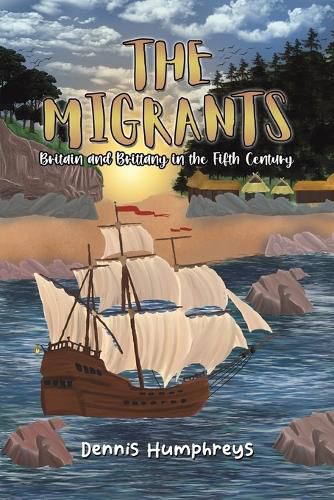Readings Newsletter
Become a Readings Member to make your shopping experience even easier.
Sign in or sign up for free!
You’re not far away from qualifying for FREE standard shipping within Australia
You’ve qualified for FREE standard shipping within Australia
The cart is loading…






This title is printed to order. This book may have been self-published. If so, we cannot guarantee the quality of the content. In the main most books will have gone through the editing process however some may not. We therefore suggest that you be aware of this before ordering this book. If in doubt check either the author or publisher’s details as we are unable to accept any returns unless they are faulty. Please contact us if you have any questions.
Who exactly was King Arthur? Why are there many Welsh and Cornish place names in Brittany? What role did the Church play following the fall of the Roman Empire? The novel gives answers by casting light upon this part of the 'Dark Ages' with a vivid picture of life in Britain and Brittany in the fifth century, a time of change and migration. The Roman legions had left Britain to its own devices and the Anglo-Saxons were invading. To escape, some Britons migrated to Brittany, taking their Celtic (Welsh or Cornish) language and their Christian religion with them. The novel takes in known historical facts and puts flesh on their bones in a fast moving and compelling narrative. Two British bothers, Teged and Owain migrate to and settle in Brittany. They are wealthy, Romanised, devout Christians, literate in Latin and spoke the British (pre-Welsh) language. Cadwyr, the son of Teged, becomes an enthusiastic warrior. Teged's daughter Nessa, who loves horses, becomes a successful horse-breeder. The novel tells of battles, a warhorse, sea-voyages, saints, miracles, druids, monks, slaves, astrologers, and a pilgrimage, not ignoring daily life with its harvests, hunting scenes, and celebrations with music and rich fare. Will Cadwyr and his young son prevail in a famous pitched battle? We hear of historical characters: Arthur, Vortigern, Hengist, Consul Aetius, Attila the Hun, St. Germanus, and more. This fascinating period is brought to light by focusing on individual and colourful characters meeting the challenges of their age.
$9.00 standard shipping within Australia
FREE standard shipping within Australia for orders over $100.00
Express & International shipping calculated at checkout
This title is printed to order. This book may have been self-published. If so, we cannot guarantee the quality of the content. In the main most books will have gone through the editing process however some may not. We therefore suggest that you be aware of this before ordering this book. If in doubt check either the author or publisher’s details as we are unable to accept any returns unless they are faulty. Please contact us if you have any questions.
Who exactly was King Arthur? Why are there many Welsh and Cornish place names in Brittany? What role did the Church play following the fall of the Roman Empire? The novel gives answers by casting light upon this part of the 'Dark Ages' with a vivid picture of life in Britain and Brittany in the fifth century, a time of change and migration. The Roman legions had left Britain to its own devices and the Anglo-Saxons were invading. To escape, some Britons migrated to Brittany, taking their Celtic (Welsh or Cornish) language and their Christian religion with them. The novel takes in known historical facts and puts flesh on their bones in a fast moving and compelling narrative. Two British bothers, Teged and Owain migrate to and settle in Brittany. They are wealthy, Romanised, devout Christians, literate in Latin and spoke the British (pre-Welsh) language. Cadwyr, the son of Teged, becomes an enthusiastic warrior. Teged's daughter Nessa, who loves horses, becomes a successful horse-breeder. The novel tells of battles, a warhorse, sea-voyages, saints, miracles, druids, monks, slaves, astrologers, and a pilgrimage, not ignoring daily life with its harvests, hunting scenes, and celebrations with music and rich fare. Will Cadwyr and his young son prevail in a famous pitched battle? We hear of historical characters: Arthur, Vortigern, Hengist, Consul Aetius, Attila the Hun, St. Germanus, and more. This fascinating period is brought to light by focusing on individual and colourful characters meeting the challenges of their age.